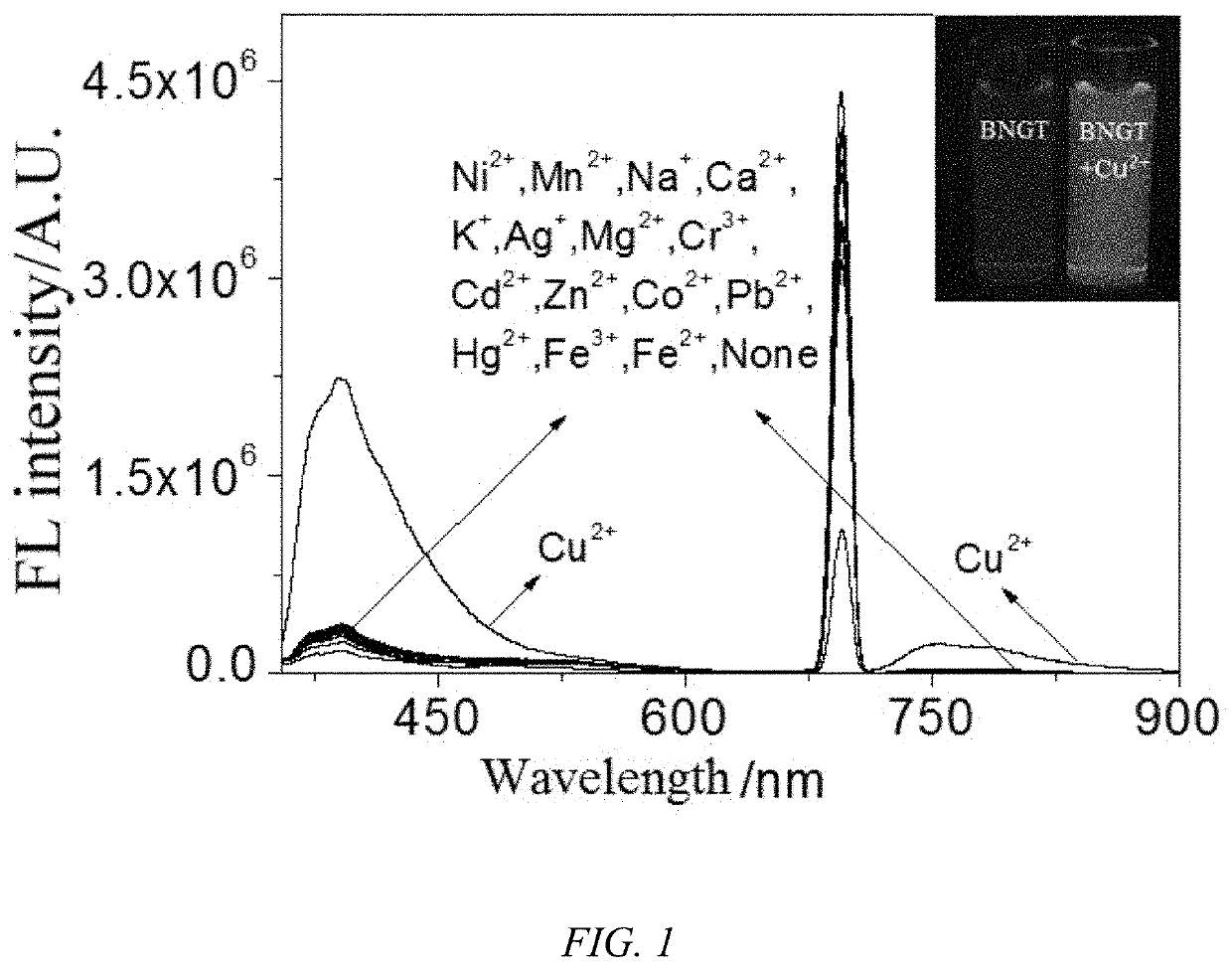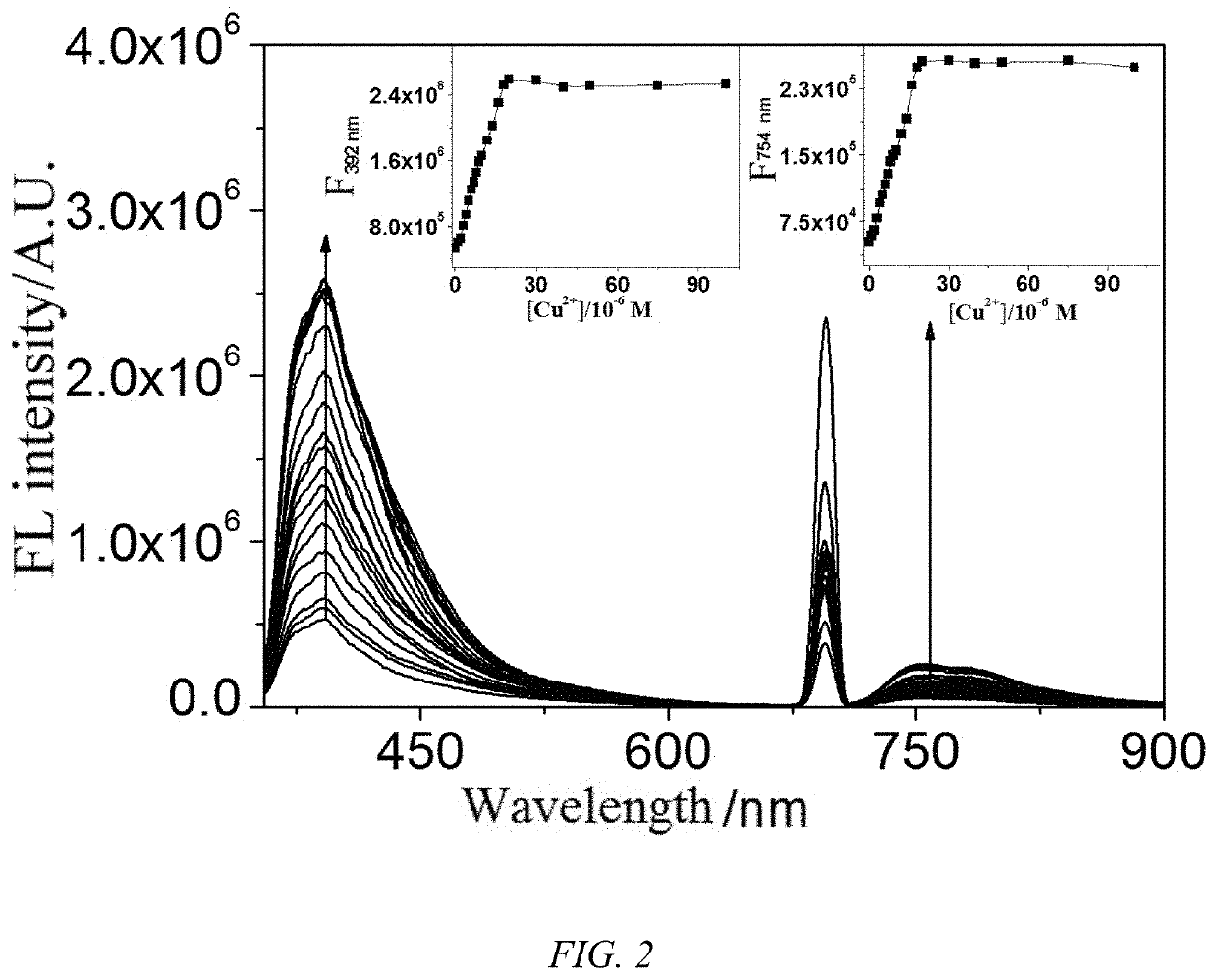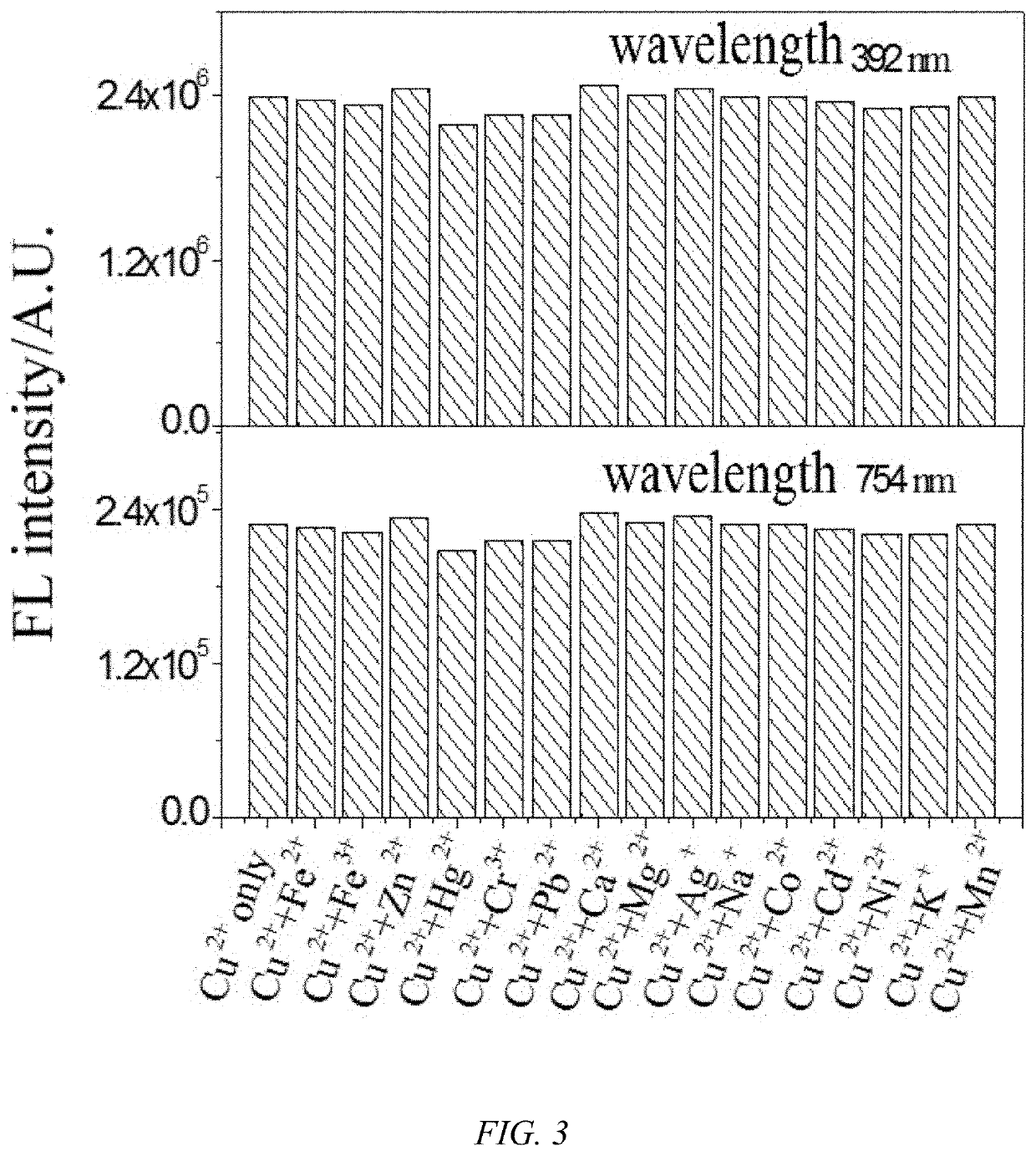1,8-naphthalimide derivative, preparation method therefor and use thereof
a technology of naphthalimide and derivative, applied in the field of fluorescence probes, can solve the problems of blood, nervous system, and potentially toxic sup>2+/sup> to human living cells, and achieve the effects of high selectivity, high sensitivity, and easy preparation
- Summary
- Abstract
- Description
- Claims
- Application Information
AI Technical Summary
Benefits of technology
Problems solved by technology
Method used
Image
Examples
example 1
on of Intermediate A
[0055]Adding 4-bromo-1,8-naphthalic anhydride and n-butylamine in a molar ratio of 1:1.3 to acetic acid, and stirring them to react at 120° C. for 6 h under the protection of N2, then stopping the reaction, pouring the reaction solution into ice water to precipitate a light yellow solid, filtering, recrystallizing the filter cake with ethanol, and drying in vacuum to obtain a light yellow solid intermediate A at a yield of 85.0%.
example 2
on of Intermediate B
[0056]Adding the intermediate A and hydrazine hydrate in a molar ratio of 1:5.3 to glycol monomethyl ether, and refluxing them to react at 125° C. for 5 h, then cooling to room temperature, pouring into 50 mL of water and stand still to form an orange-red precipitate, filtering, washing the filter cake twice with deionized water, and washing again with a small amount of ethanol, and then drying in vacuum to obtain an orange-red solid powder intermediate B at a yield of 87.7%.
example 3
on of Intermediate C
[0057]Adding the intermediate B and glyoxal in a molar ratio of 1:13.3 to anhydrous ethanol and stirring at room temperature for 6 h, then stopping the reaction to precipitate an orange solid, filtering, washing the filter cake once with ethanol and then twice with deionized water, and then drying in vacuum to obtain an orange intermediate C at a yield of 66.0%.
[0058]Adding the intermediate B and glyoxal in a molar ratio of 1:14 to anhydrous ethanol and stirring at room temperature for 6 h, then stopping the reaction to precipitate an orange solid, filtering, washing the filter cake once with ethanol and then twice with deionized water, and then drying in vacuum to obtain an orange intermediate C at a yield of 70.0%.
[0059]Adding the intermediate B and glyoxal in a molar ratio of 1:15.5 to anhydrous ethanol and stirring at room temperature for 6 h, then stopping the reaction to precipitate an orange solid, filtering, washing the filter cake once with ethanol and t...
PUM
 Login to View More
Login to View More Abstract
Description
Claims
Application Information
 Login to View More
Login to View More - R&D
- Intellectual Property
- Life Sciences
- Materials
- Tech Scout
- Unparalleled Data Quality
- Higher Quality Content
- 60% Fewer Hallucinations
Browse by: Latest US Patents, China's latest patents, Technical Efficacy Thesaurus, Application Domain, Technology Topic, Popular Technical Reports.
© 2025 PatSnap. All rights reserved.Legal|Privacy policy|Modern Slavery Act Transparency Statement|Sitemap|About US| Contact US: help@patsnap.com



